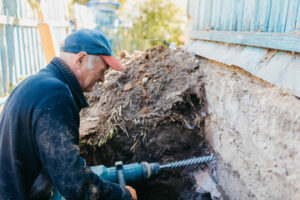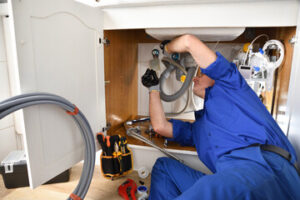Junk Removal Hemet is essential for maintaining a clean and organized living space, improving both functionality and overall comfort. Over time, homes and businesses accumulate unwanted items, ranging from old furniture and appliances to construction debris and general clutter.

Efficient junk removal helps reclaim valuable space, reduce stress, and enhance the overall appearance of a property. By properly disposing of unwanted materials, individuals can create a more organized environment while contributing to a cleaner and more sustainable community. Effective junk removal requires careful planning, proper execution, and consideration of environmental impact to ensure that waste is handled responsibly.
Managing clutter and unwanted items begins with identifying the type and volume of junk that needs to be removed. Sorting through items allows individuals to separate what can be donated, recycled, or discarded. Many items, such as furniture, clothing, and household goods, can be repurposed or donated to local charities, providing value to others and reducing landfill waste. Recycling materials like glass, metal, plastic, and paper helps conserve natural resources and minimize environmental impact. Proper disposal of hazardous materials, including paint, batteries, and electronic waste, ensures compliance with environmental regulations and prevents contamination of soil and water sources.
Junk removal also improves the functionality and safety of living and working spaces. Accumulated clutter creates tripping hazards, attracts pests, and increases the risk of fire or structural damage. Removing bulky items and excess debris enhances airflow, reduces dust accumulation, and creates a cleaner indoor environment. Improved organization and open space allow for better use of available square footage, making rooms more functional and aesthetically pleasing. Efficient junk removal also simplifies future cleaning and maintenance tasks, reducing the time and effort required to keep a space tidy and organized.
Professional junk removal services offer a convenient and efficient solution for managing large or complex cleanouts. Experienced teams have the equipment, expertise, and resources to handle heavy or awkward items, ensuring safe removal without damaging property. Scheduling a professional service allows for quick and thorough removal, minimizing disruption to daily activities. Many services provide eco-friendly disposal options, including recycling and donation, to reduce the environmental impact of waste removal. Hiring a professional junk removal service saves time, effort, and potential injury, allowing individuals to focus on more important tasks and responsibilities.
Junk removal plays a significant role in home renovation and construction projects. Demolition, remodeling, and building projects generate large amounts of debris, including wood, drywall, metal, and concrete. Efficient removal of construction waste keeps the worksite organized and safe, reducing the risk of accidents and improving overall project efficiency. Sorting materials for recycling or reuse minimizes landfill waste and reduces disposal costs. Proper handling and disposal of hazardous construction materials, such as insulation, adhesives, and treated wood, protect both human health and the environment. Coordinating junk removal with construction timelines ensures that waste is removed promptly and does not interfere with project progress.
Businesses and commercial properties benefit from regular junk removal to maintain a professional and welcoming appearance. Office spaces, retail stores, and warehouses often accumulate outdated equipment, damaged fixtures, and excess inventory. Removing these items frees up valuable storage space, improves employee productivity, and creates a more inviting atmosphere for clients and customers. Proper disposal of electronic waste, including computers, monitors, and printers, prevents data breaches and ensures compliance with privacy regulations. Scheduled junk removal services allow businesses to maintain a clean and organized workspace, enhancing overall efficiency and employee satisfaction.
Outdoor junk removal improves the appearance and safety of residential and commercial properties. Yard waste, including branches, leaves, and grass clippings, can accumulate and create an unsightly and hazardous environment. Removing fallen trees and storm debris prevents damage to structures and reduces the risk of pest infestations. Proper disposal of outdoor materials, such as soil, rocks, and mulch, prevents runoff and erosion, preserving the integrity of landscaping features. Removing old patio furniture, broken garden tools, and unused recreational equipment creates a more functional and attractive outdoor space for relaxation and entertainment.
Hoarding and excessive clutter pose unique challenges for junk removal. Hoarding situations often involve large quantities of items, including personal belongings, trash, and hazardous materials. Professional junk removal services provide sensitive and respectful assistance, helping individuals regain control of their living space. Careful sorting and disposal of hoarded items ensure that valuable and sentimental belongings are preserved while unnecessary clutter is removed. Cleaning and organizing a hoarded space improves air quality, reduces fire hazards, and restores the functionality of the home. Providing ongoing support and resources for individuals struggling with hoarding behavior encourages long-term success and maintenance of a clean and healthy environment.
Junk removal also supports environmental sustainability by promoting responsible waste management and recycling practices. Diverting reusable and recyclable materials from landfills conserves natural resources and reduces greenhouse gas emissions. Donating functional items to charities and community organizations extends the life cycle of products and benefits those in need. Composting organic waste, including food scraps and yard debris, creates nutrient-rich soil for gardening and landscaping. Partnering with eco-friendly junk removal services ensures that waste is handled in an environmentally responsible manner, contributing to a cleaner and more sustainable community.
The process of junk removal begins with a thorough assessment of the space and the types of materials to be removed. Creating a plan for sorting, recycling, and disposal streamlines the process and ensures that no valuable or reusable items are discarded. Scheduling junk removal at a convenient time minimizes disruption and allows for efficient cleanup. Using appropriate tools and equipment, such as gloves, carts, and protective gear, improves safety and reduces the risk of injury during the removal process. Coordinating with local recycling centers and waste disposal facilities ensures that materials are handled according to environmental regulations and community guidelines.
Cost considerations play a role in junk removal decisions. Factors such as the volume and weight of materials, accessibility of the site, and disposal fees influence overall costs. Comparing rates and services from different providers helps identify the best value for the project’s needs. Some providers offer discounts for bulk removal or recycling efforts, reducing overall expenses. Budgeting for regular junk removal services prevents the accumulation of clutter and minimizes the need for large-scale cleanouts. Investing in professional junk removal services saves time and effort while ensuring that waste is managed responsibly and efficiently.
Community cleanups and public junk removal initiatives foster a sense of shared responsibility and collective action. Organizing neighborhood cleanups and recycling drives encourages community members to participate in maintaining clean and safe public spaces. Providing accessible drop-off locations for household hazardous waste, electronic waste, and recyclables reduces illegal dumping and promotes proper disposal practices. Partnering with local waste management agencies and environmental organizations enhances the effectiveness of community cleanup efforts and increases public awareness of responsible waste management. Encouraging ongoing participation in community junk removal programs strengthens local pride and environmental stewardship.
The psychological benefits of junk removal extend beyond the physical improvement of a space. Decluttering reduces stress, anxiety, and feelings of overwhelm, creating a sense of order and control. Removing unnecessary items frees up mental and emotional energy, allowing individuals to focus on personal and professional goals. Creating an organized and harmonious living environment enhances mood, productivity, and overall well-being. Developing consistent junk removal habits prevents the buildup of clutter and promotes a more balanced and peaceful lifestyle.
Junk removal is a necessary and valuable practice for maintaining clean, organized, and functional living and working spaces. Proper disposal of unwanted items reduces environmental impact, improves safety, and enhances the overall appearance of a property. Professional junk removal services offer convenience, efficiency, and eco-friendly options, ensuring that waste is handled responsibly. Establishing regular junk removal habits prevents clutter buildup and supports long-term maintenance of a clean and healthy environment. Investing in effective junk removal strategies creates a more comfortable and inviting space for relaxation, productivity, and social interaction. The long-term benefits of efficient junk removal extend beyond the immediate improvement of a space, contributing to a cleaner, healthier, and more sustainable future for all.


